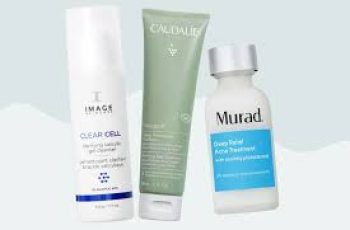
**Can Mandelic Acid Be Used Every Night?**
Mandelic acid, a member of the alpha hydroxy acid (AHA) family, offers a range of skin benefits that make it a popular choice in skincare routines. With so many acids available, choosing the right one for your skin needs can feel overwhelming. While well-known AHAs like glycolic and lactic acids often steal the spotlight, mandelic acid is a lesser-known but highly effective option worth considering.
Though it might not be as widely recognized, mandelic acid can still deliver remarkable results, improving your complexion and leaving your skin with a radiant glow.
### What is Mandelic Acid?
Mandelic acid, derived from bitter almonds, is commonly used in both over-the-counter skincare products and professional treatments like chemical peels.
As an exfoliant, mandelic acid works by removing dead skin cells from the surface, helping to reveal a smoother, more radiant complexion. By exfoliating the outer layer of the skin, mandelic acid also enhances the absorption of other active ingredients, boosting their effectiveness.
One of the key advantages of mandelic acid is its gentleness. Thanks to its larger molecular size, it does not penetrate as deeply into the skin as stronger AHAs like glycolic acid, making it less likely to cause irritation. As a result, mandelic acid is a great option for sensitive skin.
Additionally, mandelic acid has several other benefits:
– It stimulates collagen production, helping to firm and plump the skin.
– It reduces the appearance of fine lines and wrinkles, providing a smoother, more youthful look.
– It helps combat acne by regulating sebum production, reducing inflammation, and eliminating bacteria.
– It’s also effective for treating hyperpigmentation, dark spots, acne scars, and sun damage.
### Can Mandelic Acid Be Used Every Night?
Yes, mandelic acid can generally be used every night, depending on your skin’s tolerance. As mentioned earlier, its larger molecular size makes it a gentle exfoliant, working primarily on the outer layer of the skin. Unlike stronger acids, such as glycolic acid, mandelic acid doesn’t penetrate deeply into the pores, minimizing the risk of irritation.
Many people prefer to apply mandelic acid at night, as it works effectively while your skin is less exposed to free radicals, such as UV rays and pollution. Plus, your skin undergoes its natural repair process during sleep, which can amplify the benefits of mandelic acid. By morning, you’ll likely notice your skin looks revitalized, refreshed, and more radiant.
### How Often Should Mandelic Acid Be Used?
Mandelic acid is most effective when used at night, as it can help restore the skin while you sleep. It’s also common to combine mandelic acid with other hydrating ingredients, like hyaluronic acid and niacinamide, to prevent dryness and help the acid absorb better into the skin.
If you’re new to mandelic acid or introducing a new product into your routine, it’s always a good idea to perform a patch test 24 hours before applying the product to your face. This will help ensure your skin can tolerate it without any adverse reactions.
We’ve also written a more detailed guide on how to incorporate mandelic acid into your routine, so don’t forget to check it out for more tips!
### How Is Mandelic Acid Used in Skincare?
The way you use mandelic acid will depend on the type of product you’re using. Mandelic acid is found in various skincare formulations, including cleansers, toners, serums, and moisturizers.
When layering products, remember to apply them in order from thinnest to thickest consistency. This helps ensure that lighter products don’t get blocked by heavier ones, allowing them to absorb more effectively.
### What Should Mandelic Acid Not Be Mixed With?
While mandelic acid is gentle, it’s best not to mix it with other potent ingredients, such as:
– **Retinol**
– **Salicylic acid**
– Other exfoliating acids
Combining these ingredients with mandelic acid can be too harsh for the skin, leading to irritation, redness, dryness, or breakouts. To avoid discomfort, it’s best to use these products at different times or on alternate days.
If you’re unsure about how to add mandelic acid to your routine, consult a dermatologist or skincare professional for personalized advice.
### Is Mandelic Acid Effective for Acne Scars?
Yes! Mandelic acid is excellent for reducing the appearance of acne scars. By exfoliating the skin, it helps lighten hyperpigmentation caused by post-acne marks. These scars often result from deep tissue damage and excess melanin production. Over time, mandelic acid can help fade these dark spots, leaving your skin clearer and more even-toned.
It’s important to remember that while mandelic acid can help reduce hyperpigmentation, sun exposure can cause these spots to darken again. To prevent this, make sure to use a broad-spectrum sunscreen (SPF 30 or higher) daily to protect your skin and maintain the results.
### What Are the Side Effects of Mandelic Acid?
Like all acids, mandelic acid can cause side effects if overused. The most common reactions are:
– Redness
– Swelling
– Itching or tenderness
– Dryness
– Increased skin sensitivity
If you experience any of these symptoms, it’s best to stop using the product and consult with a dermatologist for further guidance.
### Final Thoughts
In conclusion, mandelic acid can be a great addition to your skincare routine and can be used every night, as long as your skin can tolerate it. It’s gentle, effective, and offers a wide range of benefits for various skin concerns, from acne to aging. Just be sure to introduce it gradually, patch-test new products, and use sunscreen to protect your skin from further damage.
For more tips on using mandelic acid and other skincare advice, check out our Instagram or consult with our skin experts who are always happy to help!


